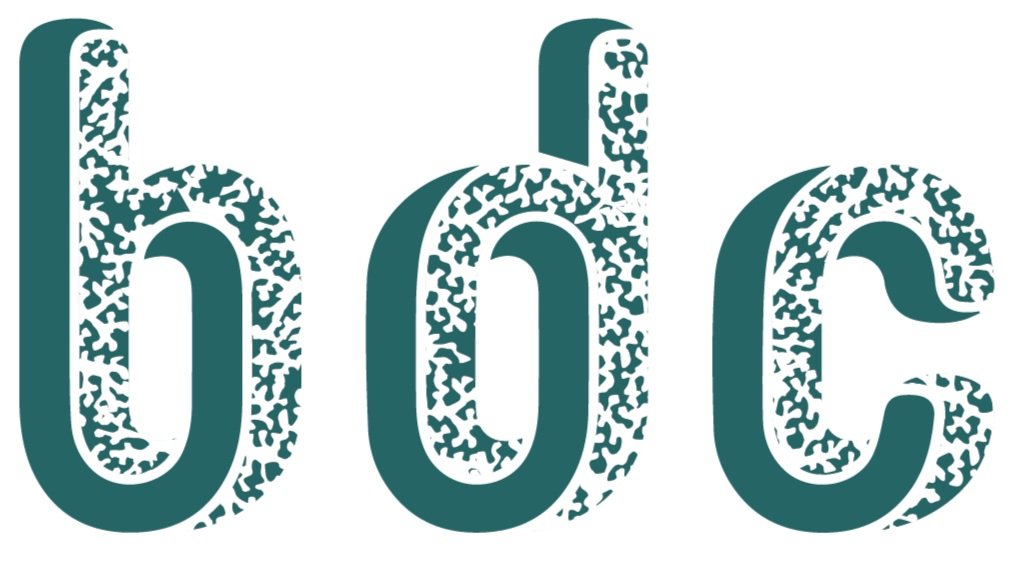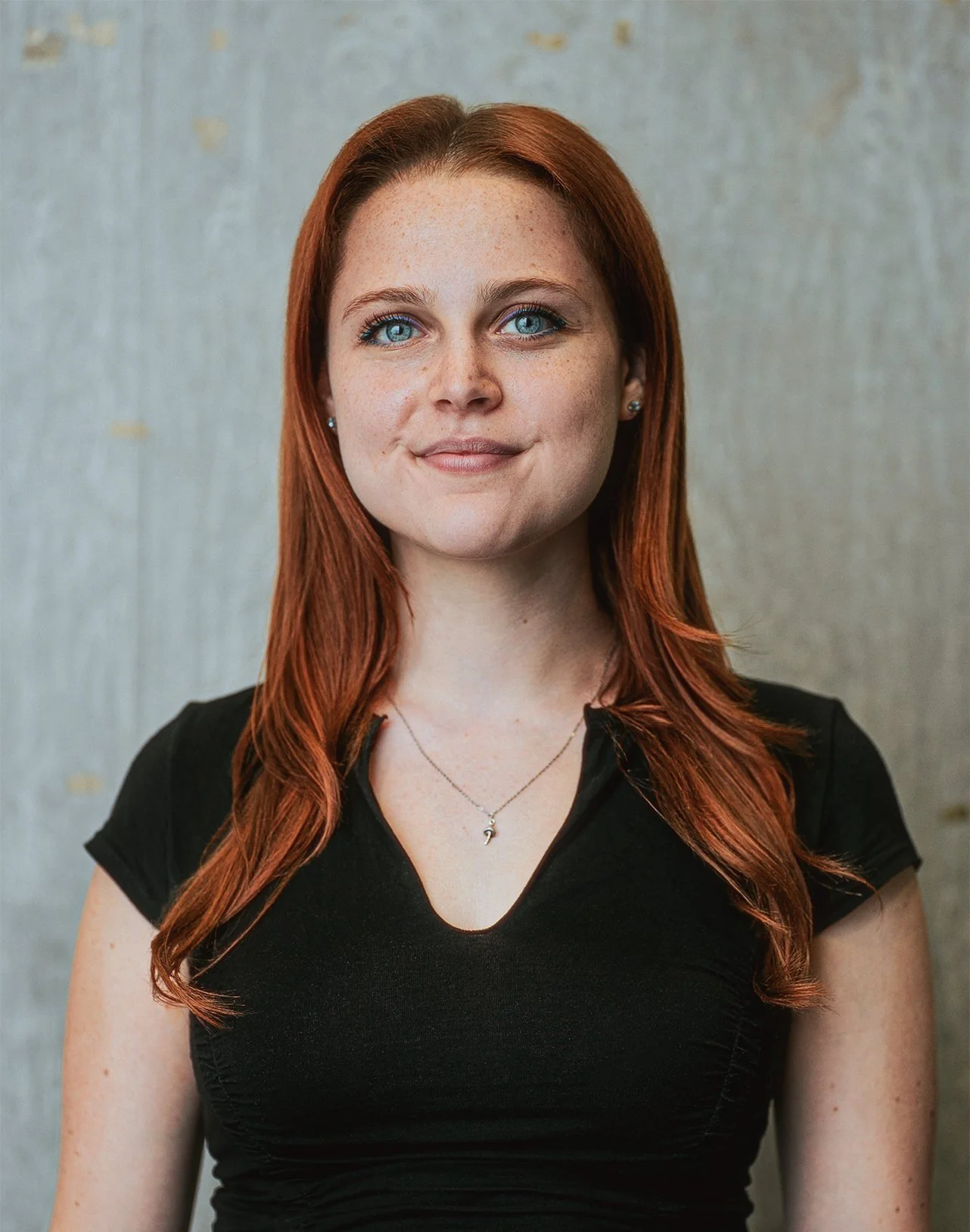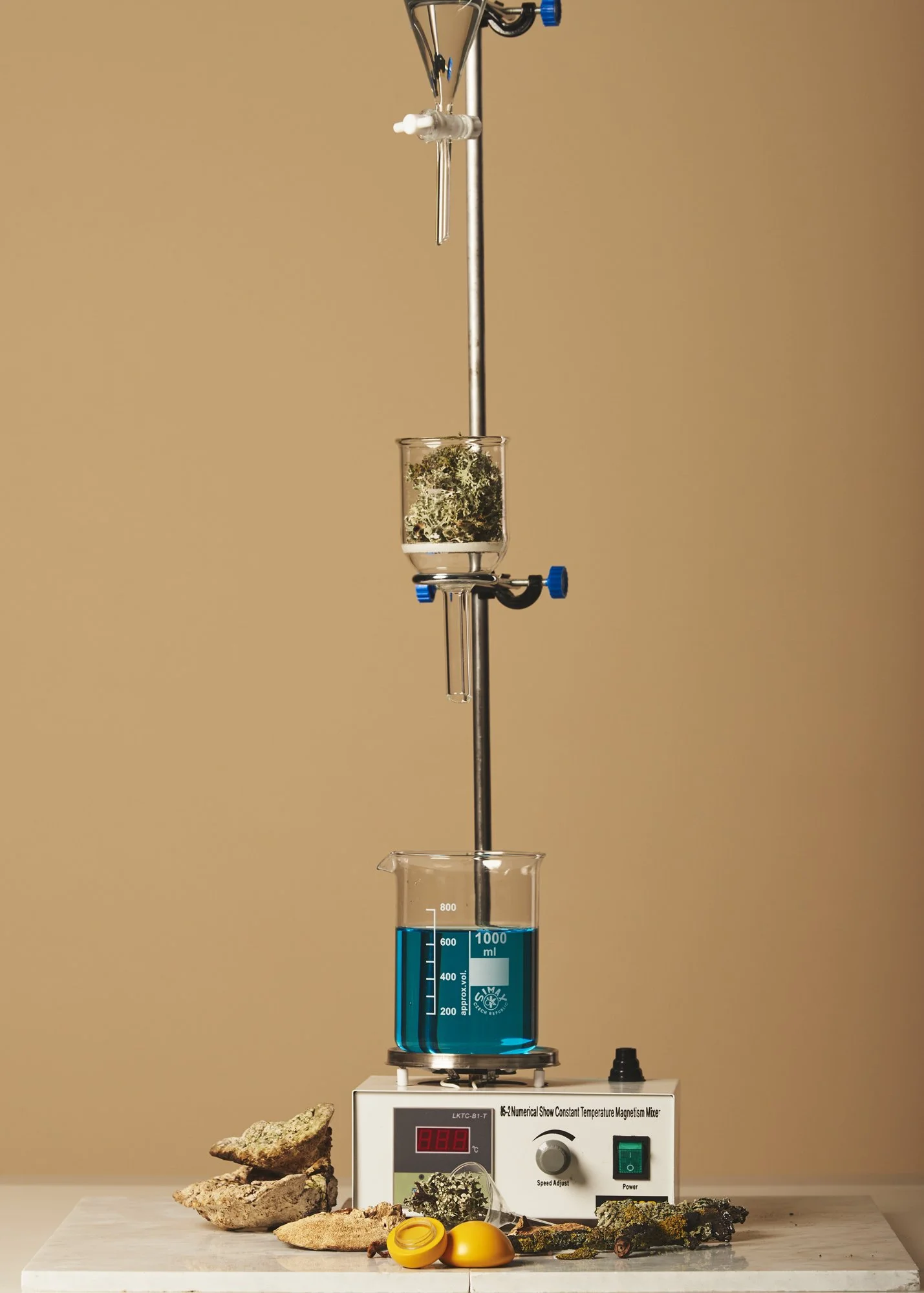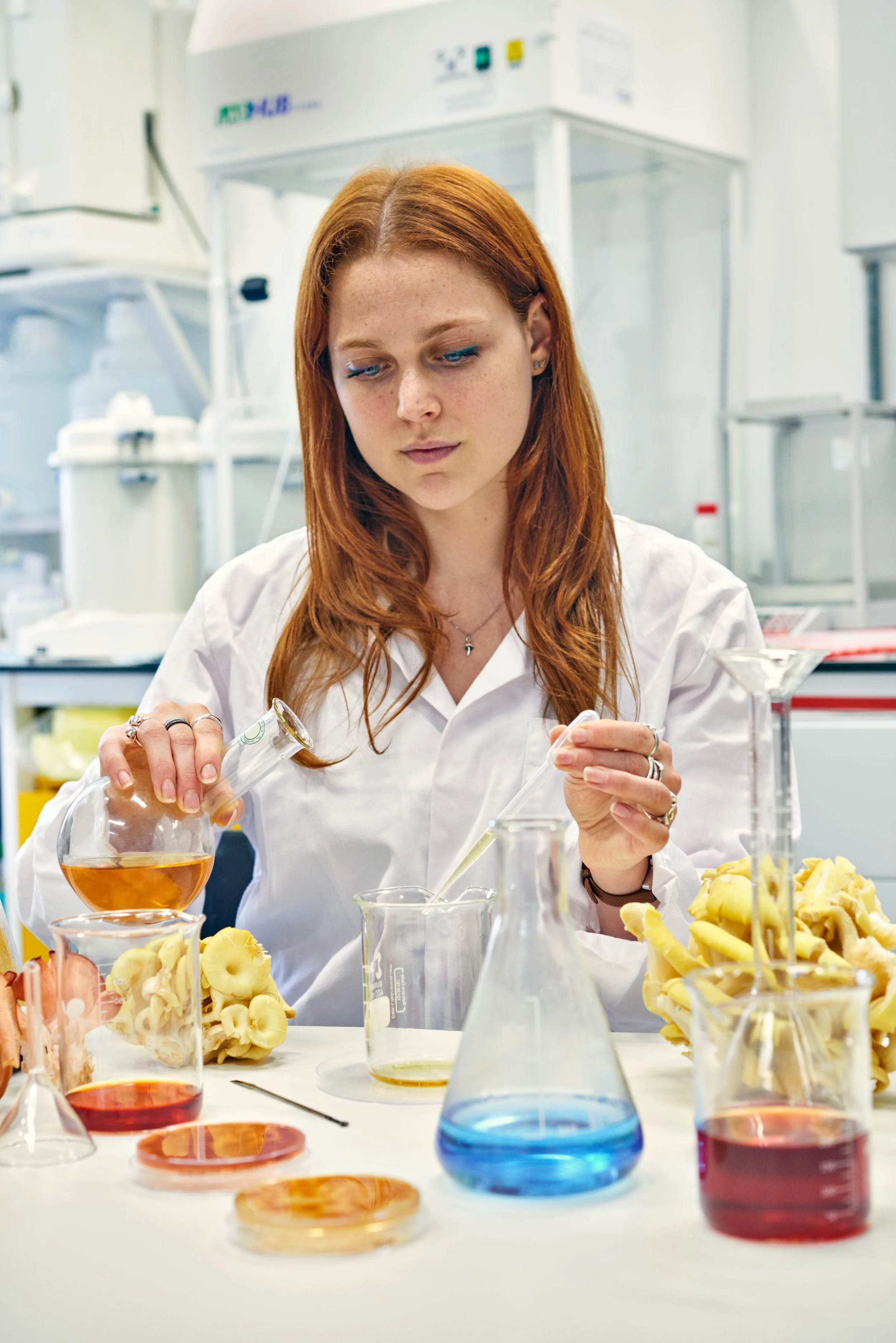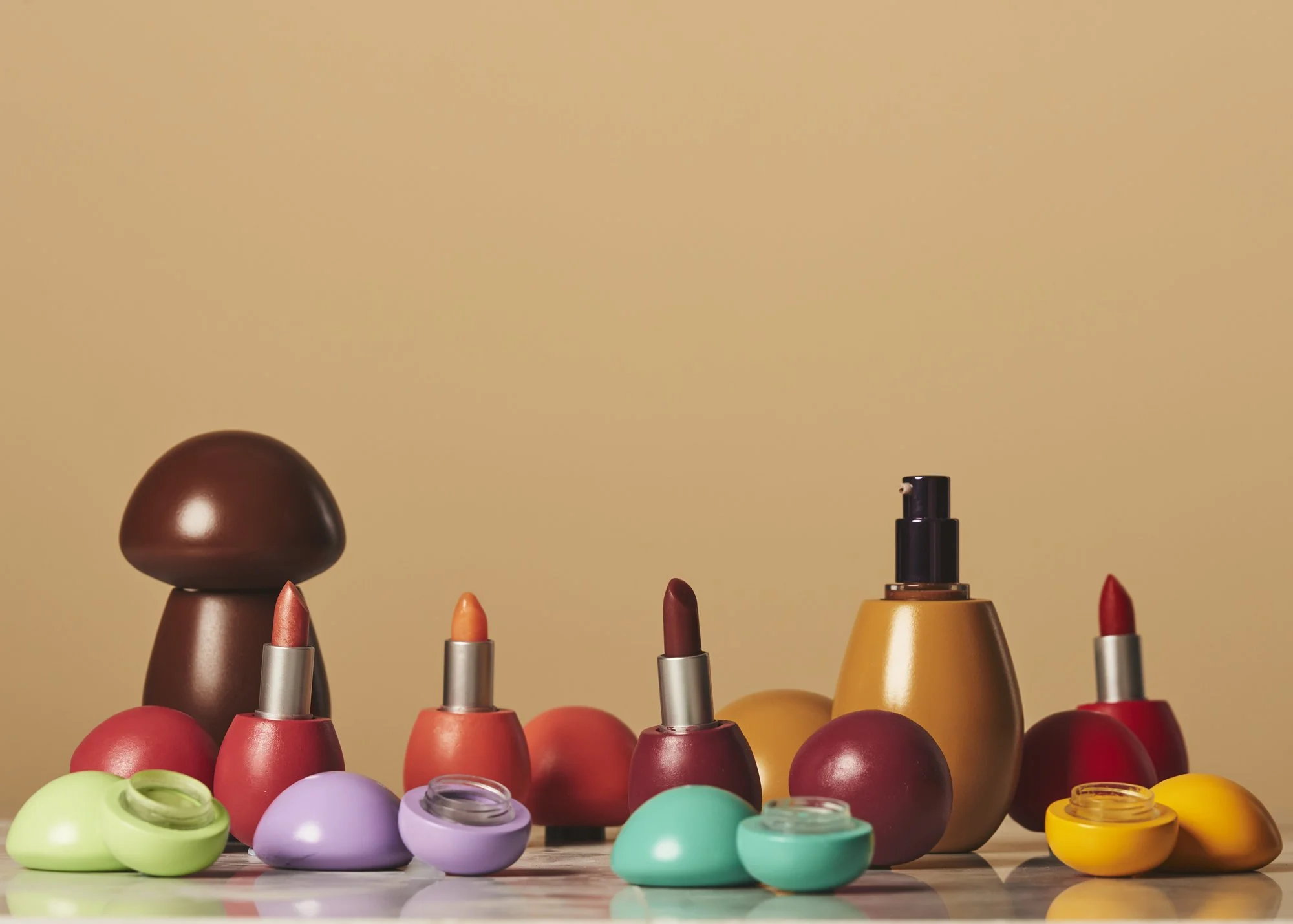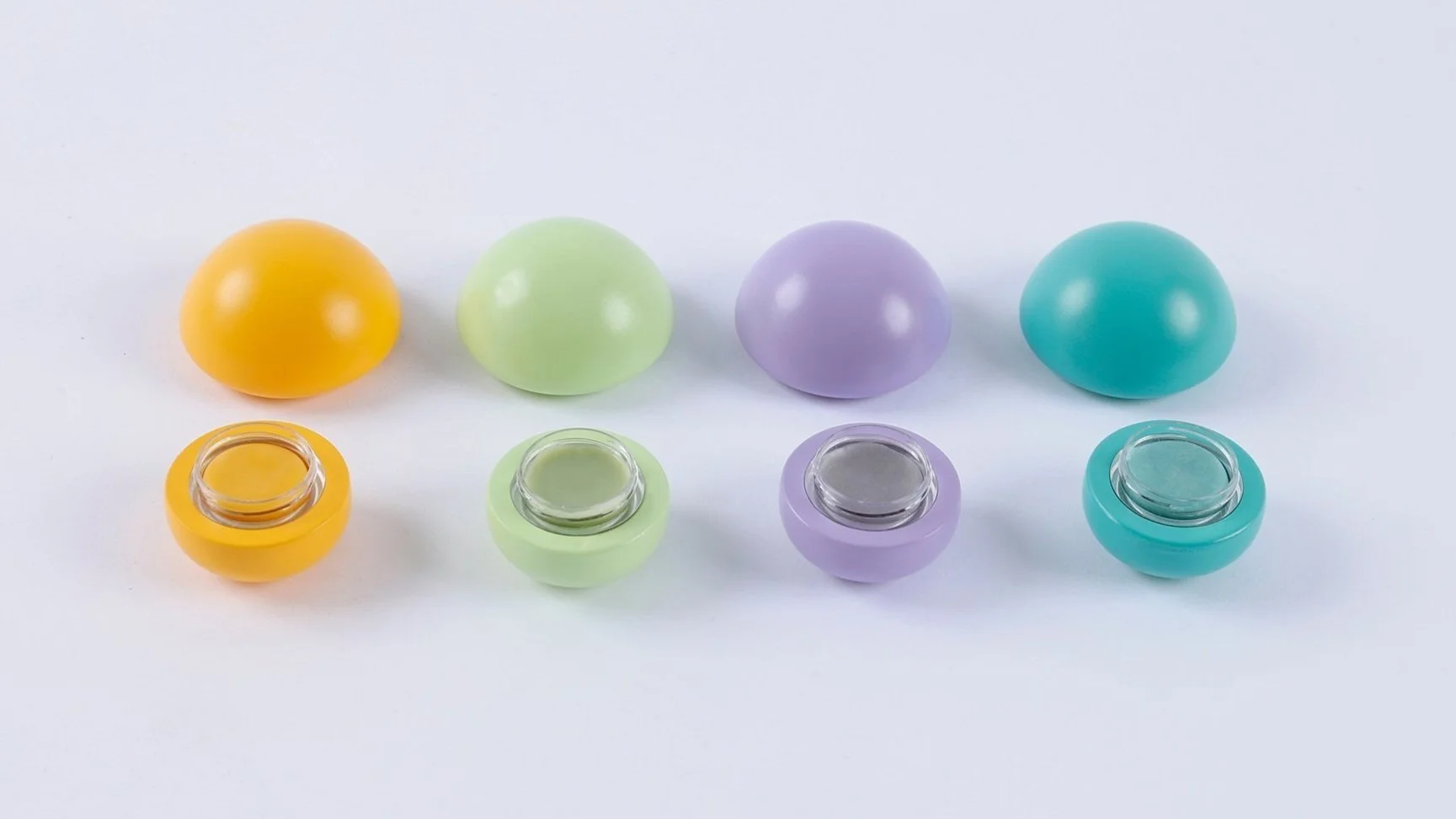Jesse Adler, BDC 2019, University of Michigan
Jesse is a multidisciplinary designer (MA, Central Saint Martins) and biomolecular scientist (BS, University of Michigan) working at the intersection of design, science, and sustainable innovation. Her practice is led by her curiosity about the natural world and passion for planet-centered design.
Jesse’s current research focuses on extracting pigments from fungi and explores their potential to reduce, or replace, our dependence on colorants from non-renewable resources (such as minerals and fossil fuels) especially in the textile, food, and cosmetic industries.
Adler’s pigment extraction setup from recent project Alchemical Mycology.
Your formal educational training sits at the intersection of science and design. Can you share your experience entering a design program with a degree in biomolecular science?
Great question! When I entered my MA I was terrified and felt completely out of place. I was accustomed to a learning system built on lectures, labs, exams, and correct answers, and suddenly I found myself in a place without any of the metrics of success that I had known. Nearly all of the learning was self-directed, with an occasional tutorial or seminar to check in on my progress. In place of exams we had critiques and self-assessments. This new system brought about the freedom to research and pursue whatever topic interested me, which was yet another unfamiliar feeling for someone coming from a predetermined track such as a science-based degree. I found the change exhilarating and motivating, spending all my time trying to learn what it meant to be a design practitioner, what issues I was passionate about, and how I fit into the evolving landscape of biodesign.
Adler working in the lab.
Has your science background influenced your design practice?
I absolutely believe that my background in biomolecular science has served as the backbone of my design practice. My scientific knowledge enables me to see unique, and sometimes microscopic, solutions in the different biological kingdoms, and after some reflection, I also realized that I utilize the scientific method as my design research process.
In your own words, how do you define biodesign as a field and a discipline?
Biodesign is a synthetic discipline, in the sense that it is a process of synthesis: the combination of ideas to generate solutions that could not exist if such disciplines or ideas remained siloed. Design is about creating beautiful and meaningful solutions to problems that challenge our world today, while biology is the scientific study of living organisms and ecosystems. I see biodesign as a space for different passions, strengths, and expertise across disciplines to converge and generate responses to issues between living organisms.
Promotional photo for Gnosis, University of Michigan BDC 2019 finalist project.
Your BDC project, Gnosis, looked at raising awareness of STI’s and empowering people to take control of their sexual health. What prompted your team to explore health equity?
I was inspired by experiences with my peers who struggled to understand or take care of their sexual health. I found that many people were too afraid or ashamed to discuss the topic and were in need of some external push to motivate them to seek help or treatment. This, combined with a desire to utilize food waste as a resource, created Gnosis, a color-change indicating lubricant that would motivate those who are reluctant to seek help from a medical professional.
“I see biodesign as a space for different passions, strengths, and expertise across disciplines to converge and generate responses to issues between living organisms.”
What kind of work or projects are you pursuing now? What are some questions that are motivating you to explore this work?
Right now I am researching fungal pigments and their potential to reduce our dependence on fossil-fuel based colorants in commercial applications. Over the past year I have proven the viability of fungal pigments in cosmetics and paints, and will be exploring applications in food and textile colorants soon as well. Some of the questions motivating the work at the moment are how to scale the research and grow it into a business disruptive enough to replace our use of fossil fuel or mineral-based colorants.
Adler’s makeup collection made from pigments extracted from mushrooms, lichens, yeast, and mould.
University of Michigan BDC 2019 team sharing their project Gnosis at the Summit gallery show. Photo credit: Pongsak Pattamasaevi
Did your experience with BDC inform the way you design today? Or did you have any “discovery” moments while going through the Biodesign Challenge?
Working on our BDC project was my first introduction to the world of biodesign and sustainable creation. The entire process was a bit of an “aha moment” for me as I finally found a place where my interests converged. It was from that moment that I knew I wanted to work at the intersection of science and design to create sustainable solutions to help people and the planet. I spent a lot of time at the Summit listening to others and learning from how they presented their research. It was also a fantastic networking opportunity to engage with the biodesign ecosystem. My BDC experience led me to apply for the MA Material Futures course at Central Saint Martins to continue learning about and working in this space.
Do you have any advice for future BDC students?
Don’t be afraid to put yourself out there, especially in networking situations. If you don’t ask, you don’t get, so don’t hold back from asking for what you really want or need in order to achieve your goals.
Are there any resources you recommend to people interested in learning about biodesign or sustainability?
Why We Care, podcast hosted by Tiphaine Marie Pittet
Fashion For Good, global initiative, Museum and Innovation Platform
Ellen MacArthur Foundation, non-profit that creates evidence-based research on the benefits of a circular economy
The Biomimicry Institute, non-profit with initiatives across education, innovation, inspiration, and systems change
Doughnut Economics, book by Kate Raworth
Resultant makeup samples from Alchemical Mycology.
Materials used for pigment extraction in Alchemical Mycology.
Images courtesy of Jesse Adler (unless otherwise noted)
